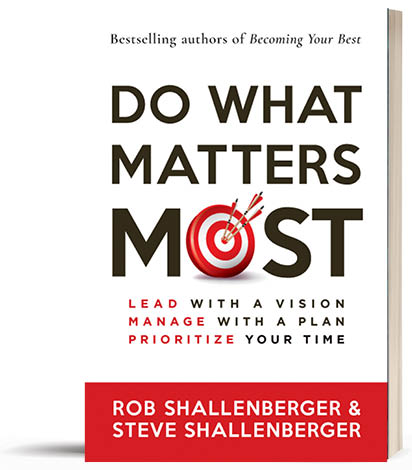
How to do what matters most and raise your productivity quotient? Developing three habits-having a written personal vision, setting roles and goals, and doing pre-week planning-will lead to a transformation, both personally and professionally.
Whether at work or home, we all have those occasional moments of total clarity where we know exactly what we should be doing, where we want to end up, and which tasks are the most important for getting us there. Unfortunately, the brain does not tend to linger there for long. That is why we also have many more moments lost in mindless Instagram scrolling or fending off the seemingly endless list of to-dos.
The key is to take control of our schedules and do what matters most. Easier said than done, right?
Plot where you spend time
To put the focus on activities that most matter for increasing productivity, consider starting with identifying where you or your team members tend to focus your attention.
Former US President Dwight D Eisenhower originally developed a version of a timeaccountability matrix; however, with some modification, this new Do-What-MattersMost version helps people and teams categorise tasks or behaviours into four quadrants:

The quadrant that represents the DoWhat-Matters-Most tasks and where to maximise your time is Quadrant 2. This means that you will want to minimise the time spent in the other three quadrants.
You likely know people who spend the majority of their time in each of these quadrants. Where do you spend most of your time? Where do you think your co-workers spend their time? Maybe you know people who seem to skate by doing the minimal amount of work required for the job; those are Quadrant 3 or Quadrant 4 people, and it’s often frustrating to work with them.
In any organisation, it is not just the individual’s responsibility to meet objectives and goals—it is also up to the leadership. For example, maybe you know the leader who is always dropping tasks on his or her team that need to be done ‘right now’. That is a person who is continually reacting to the crisis of the day and lives in Quadrant 1. This type of management style has a significant negative impact on a team.
Research indicates that people with the highest productivity quotient who have attained an optimal high performance and productivity balance spend approximately 20 per cent of their time in Quadrant 1, approximately 60 per cent of their time in Quadrant 2, no more than 15 per cent in Quadrant 3, and 10 per cent in Quadrant 4. These numbers hold true for most industries.

High performers make Quadrant 2 their home
Our research found that 68 per cent of people feel like prioritising their time is their biggest challenge. Interestingly, 80 per cent of the same people did not have a process for prioritising their time to do what mattered most. The most common approaches to managing time are often scattershot methods of post-it notes, making to-do lists, or delegating to an executive assistant—all of which are reactive and Q1 in nature.
Rather, those who effectively take control of their schedules and spend most of their time in Quadrant 2 have developed the three Do-What-Matters-Most habits. The application of these three habits increases productivity by 30 to 50 per cent while reducing stress.
The three Do-What-Matters-Most habits are:
1. Developing a written personal vision;
2. Setting roles and goals;
3. Doing pre-week planning.
While these three habits may seem simple, the reality is that less than 1 per cent of people in the workplace apply them. Most people have good intentions and try to do what matters most. But moving past the reactionary tasks and making adequate time to address the important work— that what actually produces results—is very intentional. It means making time to define your personal vision, set role and goals, and then be disciplined to do pre-week planning prior to the beginning of each week.
Developing these three habits will lead to a transformation—both personally and professionally. You will be able to schedule your priorities rather than prioritise your schedule and make time to do what matters most. Rather than just being successful in one area, you will lead a life by design and have a balance of success stories across the many areas of your life.
Log In or become an AIMA member to read more articles
